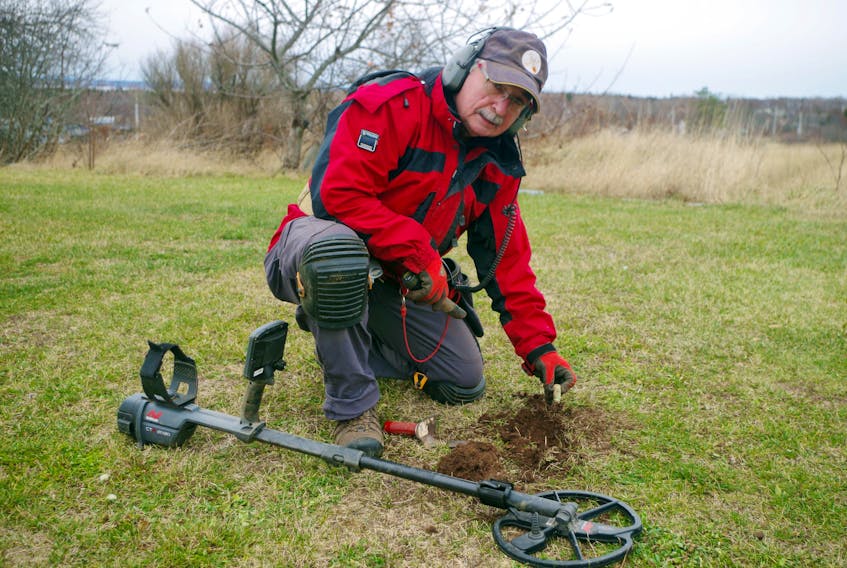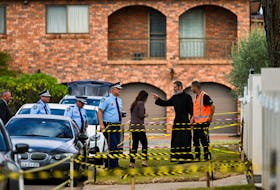JOGGINS, N.S. – It has been quite a year for Arselle Delvaux – even though he has been dead for a century.
Delvaux, a private with the Royal 22nd Canadian Battalion (also known as the Van Doos), was killed during the Battle at Cherisy on Aug. 27, 1918. When the community of Joggins erected its cenotaph 70 years ago to honour those who died in the two world wars, Delvaux’s name was inadvertently left off.
Earlier this year that wrong was righted when the Joggins Branch of the Royal Canadian Legion announced its was placing his name and nine others on the cenotaph. Now, the tip of Delvaux’s swagger stick has been found on the legion property – that at one time was home to the community’s school.
“It’s a pretty interesting find,” said Dean Brown, who earlier this year found a World War One medal on the beach at Lower Cove. “When I first went there I thought to myself that it would be nice to find something for these folks at the legion and it wasn’t 10 or 15 minutes later that I pulled this thing out of the ground.”
He said the artifact is in great condition, considering it has probably been in the ground for more than 80 years.

“It’s in excellent condition,” he said. “It had a green patina to it from sitting in the earth for that length of time. It still had a piece of bamboo in it, but the rest of the swagger stick is long gone.”
Brown, who is a member of a group called the Hardcore Metal Detectors, was metal detecting on the beach at Lower Cove in August when he found a British War Medal from the First World War belonging to Harold O’Regan – who survived the war only to die from injuries sustained in a coal mining accident in Joggins in 1933.
Dara Legere, the vice-president and secretary of the legion at Joggins, was amazed when Brown came up with the tip to the swagger stick so fast.
“It’s almost as if it was meant to be,” Legere said. “We just discovered that Arselle’s name along with nine others was not on the cenotaph. We went about rectifying that and just after that Dean finds the tip of this swagger stick that we’re pretty certain belonged to him.”
Delvaux was a native of Belgium who came to Joggins with his family to work in the coal mines. It was early in the war when he went to Amherst to enlist and was put in the 150th battalion because of his ability to speak French. The 150th, or the Carabiniers Mont-Royal, left for England in September 1916.
He was later transferred over to the famed Van Doos regiment.
The swagger stick tip has the 150th battalion on it and since it was a French-speaking battalion and Delvaux spoke French, Legere is positive it belongs to him. There were only a handful of Nova Scotians to serve with the 150th and he believes Delvaux was the only one from Cumberland County.
Legere said the swagger sticks were given to members of the Canadian Expeditionary Forces upon enlistment.
Delvaux enlisted in 1914 and served on the Western Front. It was following the Battle Amiens, during the 100-day offensive, that he met his end. His grave is in the Wancourt British Cemetery, eight kilometres southeast Arras, France.
Legere is unsure how it ended up where it was found.

“The legion sits on the property where the old schoolhouse was located. It burned down in the 1920s,” Legere said. “Somehow the stick ended up on the school. He may have left it there when he left to go overseas and when they were demolishing the school after the fire it may have been buried and forgotten.”
The artifact was found approximately 10 metres from the legion building.
Brown has given his find to the legion which will display it along with the O’Regan medal he found on the beach this summer.
Twitter: @ADNdarrell









